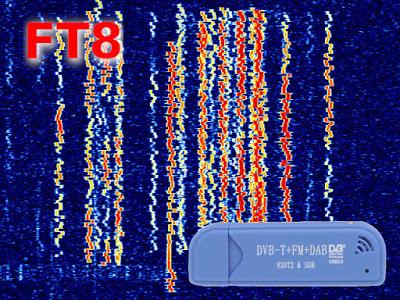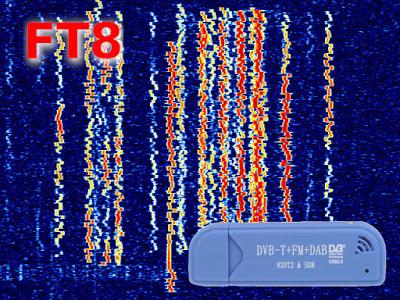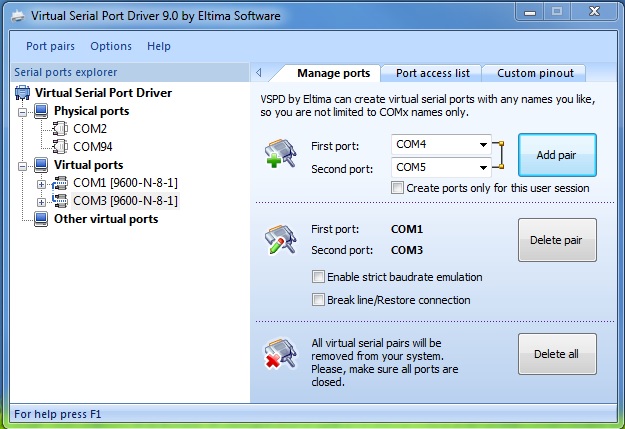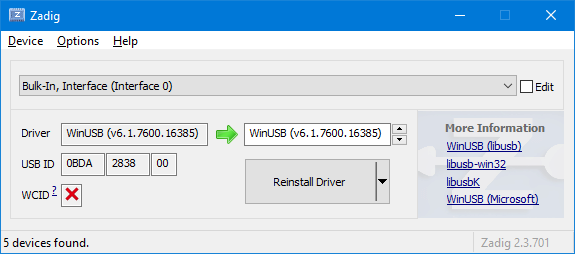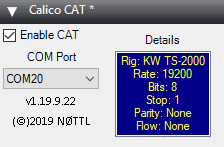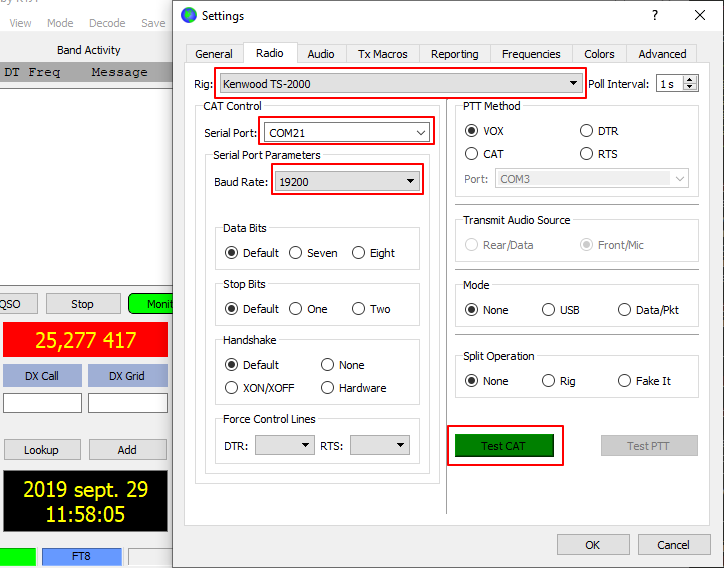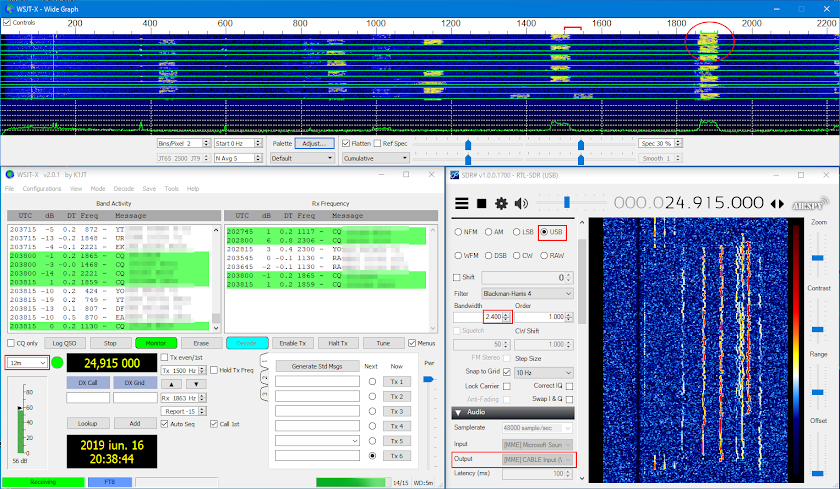We'll decode FT8 messages using Realtek RTL2832U hardware with software-defined radio (SDR) application
Only receiving will focus on this post. By using Realtek RTL2832U hardware with a software-defined Radio SDR application, we will decode FTB messages. For common analog modulation, the SDR tools will be used. There is WSJT-X software for FTB decoding and generation. But this is accepted only for audio inputs. Then SDR application will be used to SSB demodulation and now I will use its audio output to pipe WSJT-X. Automatically set the frequency of SDR software, the latter can be configured. A virtual audio cable is needed besides configuration. And also virtual serial ports are needed.Explain each section of your project
SDRsharp software must be set up by windows users. To let WSJT-X change receiving frequency a CAT plugin is necessary. CAT plugin works with serial port and virtual COM port software are also installed. So audio (SSB Demodulated) will be piped to WSJT-X. For virtual serial port emulation, you can use Eltima Virtual Serial Port driver. You get an installation package. After it installs, launch Setup and create/edit a pair of serial ports.
If you haven't installed it already then download it and extract it to a folder. Now double click on this script to install support for RLT-SDR. Now plug the USB and cancel any automatic driver that may appear. In the folder SDRsharp, a tool that may install any USB driver launch and select only device whose name is started with RTL8232, click on the install button and wait to complete it. It may restart the device.
No need to launch SDRsharp. So, download the calico CAT now and extract SDRsharp.calico.dll in SDRsharp directory. With 32-bit SDRsharp I tested this plugin and I don't know that it will with 64-bit version. There is plugin.xml file in the same folder. Open it and add the magical line from the text file <sharpplugin> node.
I said before that SSB demodulated audio from SDRSharp must be funneled to WSJT-X. This requires virtual audio gadgets. There are two well-known answers for this. We have Virtual Audio Cable (VAC) and VB-Cable. Not surprisingly, I lean toward allowed utilizing the product, so I installed VB-Cable. This is only a driver that includes extra solid cards in your framework. It's prescribed to restart the PC after establishment. After this, when you select audio yield in SDRSharp you will have the alternative [MME] CABLE Input (VB-Audio Virtual C. I would do well to results (more decoded FT8 parcels) by utilizing MME rather than DirectSound. I don't exactly get why, since DirectSound utilizes WASAPI backend which ought to have the most reduced dormancy. Anyway, don't hesitate to attempt both and see which one works better for you.
Let's start
Plug the RTL and connect a better antenna and let's start it. Set the USB in it and make sure demodulation, audio output is set to VB cable and band with 2.5 kHz. CAT plugin is needed, so check and enable it. Now click on the play icon (demodulation) in SRDsharp, on what frequency you are is not a matter at this time. Go to file and launch WSJT-X and select Radio Tab. Select Kenwood TS-2000 rig and calico CAT and also choose the other port (virtual serial). Therefore now select the band rat to match the plugin (19200).
If everything is working correctly then click on Test CAT button and setup. The frequency from SDRsharp will display the main window WSJT-X.
No need to close the settings set the input cable output by the move to audiotape. WSJT-X the main window selects the wavelength from the combo box (to change the frequency) located on the left side of the large frequency display. Changes must be visible. If changes will not visible then it will show the big error and then there will need to check the virtual rig choose a frequency where you see the FT8 Packets. The display by the waterfall is shown at least 2000 Hz. To set decoding frequency looked there and click on the broadcast. Now on frequency new packets are broadcasts. So on the main windows, new messages or notifications will display.
If you see FT8 broadcast on the right frequency then there are audio latency issues with WTP server perform clock sync and try many different audios interfaces. The simple rate should be 48000 Hz and to take control of audios, these applications are allowed. If any effect is in use it must be disabling. Hardware and sound manage audio devices are done from window classic control panel. (where you check their configuration). Now restart all the apps.
If everything is going well and working well and you want to stop then choose WSJT-X first. CAT control will give you a lot of error if SDRsharp is not running well. First, there should be a SDRSHARP followed by WSJT-X.
If you didn't receive anything, then check the map at PSK reporter to check the frequency and to check who is in air. Your RRTL8232 dongle must be has a tuner. That may receive the chosen frequency (below 25MHz). Then use a better antenna if it is necessary.
